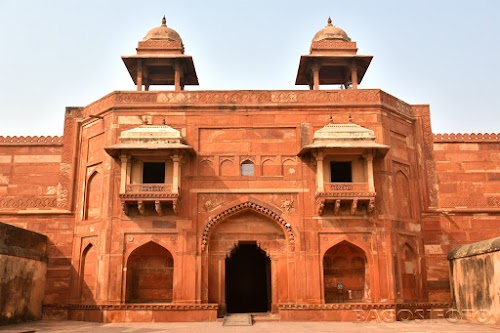
Jodha Bai's Palace
Fatehpur Sikri, India
- Explore the intricate carvings and courtyards.
- Imagine the royal life within the palace walls.
- Learn about Jodha Bai's life and influence.
- Take photos of the stunning architecture.
Known for:
Description:
Jodha Bai's Palace, also known as Mariam-uz-Zamani's Palace, is the largest and arguably the most important building within the Fatehpur Sikri complex. This magnificent palace showcases a blend of Rajput and Mughal architectural styles, reflecting the religious tolerance and harmonious relationship between Emperor Akbar and his Rajput wife, Jodha Bai. The palace features intricate carvings, beautiful courtyards, and stunning jharokhas (overhanging enclosed balconies). Its unique design incorporates elements from both Hindu and Islamic traditions, making it a fascinating example of syncretic architecture. Visitors can explore the spacious rooms, imagine the royal life within its walls, and appreciate the artistic details that adorn every corner of this historical gem. The palace offers a glimpse into the life of a powerful queen and the cultural exchange that flourished during Akbar's reign.
History:
Constructed during the late 16th century, Jodha Bai's Palace was built for Akbar's Rajput wife, Mariam-uz-Zamani (Jodha Bai). Akbar, known for his religious tolerance and political acumen, commissioned the palace to reflect Jodha Bai's Hindu heritage while integrating it seamlessly into the Mughal architectural style. The palace served as the queen's private residence and a center for her religious and cultural practices. It stands as a testament to the emperor's respect for his wife's beliefs and traditions. The palace's construction also played a significant role in fostering better relations between the Mughal Empire and the Rajput kingdoms. Over the centuries, the palace has been well-preserved, offering visitors a tangible connection to the Mughal era and the life of one of its most influential queens.